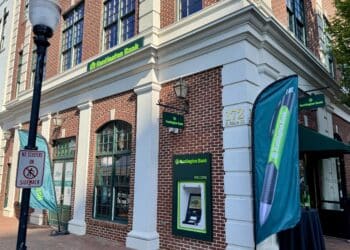Banking in the Age of the Jetsons

Like many kids growing up in the 1960s, I looked forward to Saturday morning cartoons. Armed with my bowl of Rice Krispies—the only time I was allowed to eat in the living room–and sporting my Superman pajamas, I’d settle in for some childhood decadence.
One of my favorite cartoons was The Jetsons, which ran from 1962 to 1966. (For those of you unlucky enough to experience the 1960s, there was a reboot of the series during the 1980s.) George, his wife Jane, kids Judy and Elroy, and dog Astro lived an average family life high above the clouds in Orbit City in the year 2062.
Some fifty years later, I’m struck by how much The Jetsons got right about the future and how some of those futuristic objects I viewed on my parent’s CRT television with rabbit ears are impacting financial services today. No, we don’t live in homes and work in offices perched above the clouds to escape the smog below, but we are witnessing an innovation transformation that is turning a lot of industries—including financial services—on its head.
What the Jetsons Got Right: Consumers Love Convenience and Personalization
Rosie the robot maid kept the household running smoothly. George’s car folded into a briefcase that he could carry into his job at Spacely Sprockets. Personalized meals were delivered at the push of a button. George would video chat with Mr. Spacely from the comfort of the Jetson home.
We have some of these conveniences and personalized products today. iRobot’s Roomba Vacuum Cleaning Robot can’t talk or watch the kids, but it does clean the floors. We don’t have folding cars, but the MOVEO electric scooter folds into a suitcase with rollers. With the Coca-Cola Freestyle app, you can create a personalized drink on your mobile device and send the mix to a Coca-Cola Freestyle machine for a custom blended fountain drink. But if you are waiting for a food replicator, an Israeli firm has developed a $1000 food ‘replicator’ that can create almost any dish in 30 seconds using pods that contain natural dehydrated ingredients.
Video conferencing via Skype and FaceTime and others is ubiquitous. One of the fastest growth markets for Skype is older adults anxious to connect with geographically far-flung grandchildren. For businesses, video conferencing has made remote working no big deal.
Other technologies showcased on the Jetson’s included moving walkways and flat screen televisions. Bingo. And we didn’t have to wait until 2062.
Change Translated to Banking
So what can bankers learn from a television show from the 1960s? There are a couple of lessons. The first is that the velocity of change continues to accelerate, even in banking.
The Bank of New York, the first U.S. bank, was established in 1784. For almost two hundred years, the only way to interact with the bank was to walk into the bank. By the late 1960s, the ATM made its debut, eventually allowing customers to get cash and conduct basic banking transactions outside the bank. Within 10 years, voice response units (VRUs) allowed customers to contact the bank without actually leaving their home. Fast-forward another 10 years and PC banking was introduced, followed by another 10 years Internet banking and now mobile banking.
Video conferencing and chat allow customers to interact in real-time with a bank employee. Remote deposit capture allows customers to electronically deposit checks using a mobile device.
In the past 40 years, the number of ways to conduct banking has exploded, spurred by the original self-service banking device, the ATM. Prior to the ATM, banking had been largely unchanged for 200 years.
Change is occurring so quickly that financial institutions that create five-year strategic plans find those plans outdated 18 months later. Banks need to be willing to change their strategies much more quickly than they have in the past.
The second lesson for bankers is that you can’t take anything for granted and have to be open to learning new things and embracing new ways of thinking. For example, self-driving cars are making their way to market. Think about how these cars will disrupt entire industries, including banking. As automobile accidents are eliminated, how will that impact the insurance industry? Municipalities are already scrambling to find ways to replace the revenue that they now receive from traffic violations.
An Attitude Adjustment for Bankers
To think that what you grew up with as fantasy is now common in our everyday lives is exciting. Or, depending on your attitude and perspective, it could be disorienting and frightening. Hopefully the culture of your institution–from the board of directors to executive leadership to front-line employees–share a sense of wonder about the future and excitement about the opportunities for the bank to offer more convenient and personalized products and services to customers.
If your institution’s culture doesn’t embrace the future, you may find yourself in an environment that is more akin to another popular television show from the era: The Flintstones.
George and Jane? Or Fred and Wilma? You get to decide.
Paul Schaus is the President, Chief Executive Officer and Founder of CCG Catalyst. Contact him at PaulSchaus@ccg-catalyst.com or 1-800-439-8710 ext 201. Follow CCG Catalyst on LinkedIn and Twitter.











